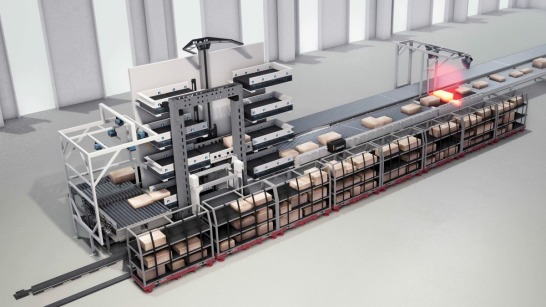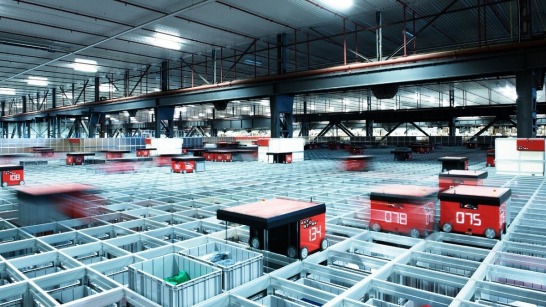Always on the move
Operating virtually noiselessly and at a brisk walking pace, they seamlessly blend into the background. The 75 employees at the site are quite used to working with their two 'Hugos', and have even been known to give them an occasional friendly pat on the back. “The benefit of using driverless vehicles is that they not only eliminate the need for a forklift operator to trek monotonously back and forth between the pick-up point and warehouse,” says Barth, adding, “but they are also extremely safe.” If someone gets in the way of the AGVs, they’ll stop. The two 'Hugos' have been operating nearly 100,000 hours combined without a single incident.
“Longevity is what makes our driverless transport systems unique,” says a proud Thomas Kaminski, Dematic’s vice president for Mobile Automation. He was previously the CEO at Egemin North America before it became part of the new KION brand, Dematic. “A compact and robust design, a long-life battery, superior electromechanical components and regular software updates have made it possible for them to run for over 20 years and counting,” explains Kaminski.
“If the two AGVs ever broke down, we would have a real problem on our hands,” admits Barth. “We would then have to quickly bring in a forklift and an operator as a replacement.” But the operations manager has little reason to worry. The trucks are serviced annually and the transmissions were replaced as recently as 2016. At some point, of course, Barth will have to think about a general upgrade since it is now just the facility’s elder statesmen who are familiar with the old BOS operating system and it would not be that much cheaper than purchasing new equipment.
/mpm_egemin_roland_barth_image_737x322.jpg)
/mpm_egemin_thomas_kaminsk_image_737x322.jpg)
/mpm_egemin_hugo_delivers_workplace_image_767x563.jpg)
/mpm_egemin_hugo_transportsystem_top_image_767x563.jpg)
/mpm_egemin_hugo_with_paint_buckets_image_767x563.jpg)
/mpm_egemin_worker_interacts_hugo_image_767x563.jpg)
/mpm_egemin_transporter_lasernavigation_image_767x563.jpg)
/mpm_egemin_production_hall_image_767x563.jpg)

